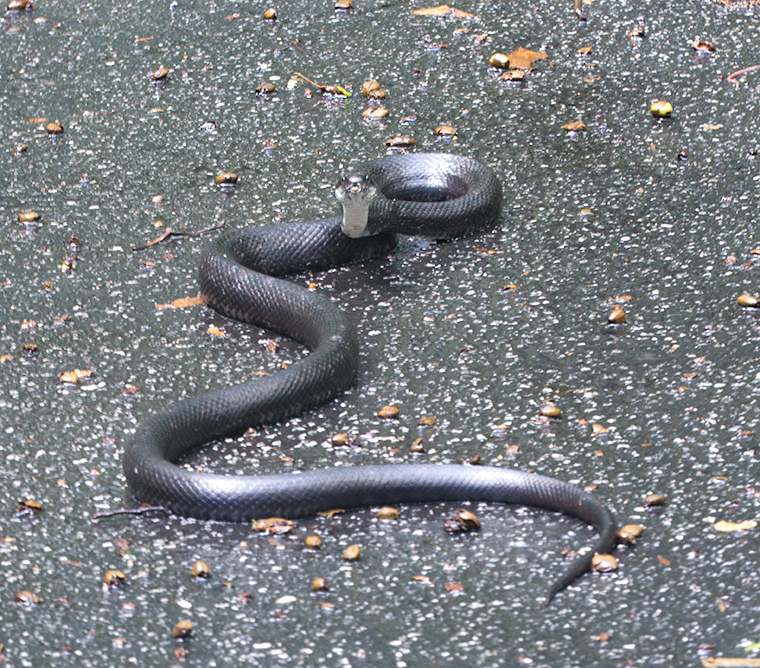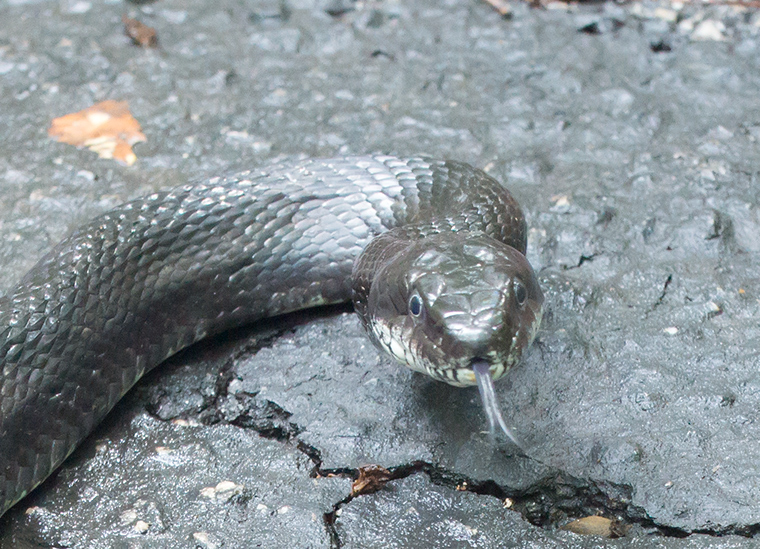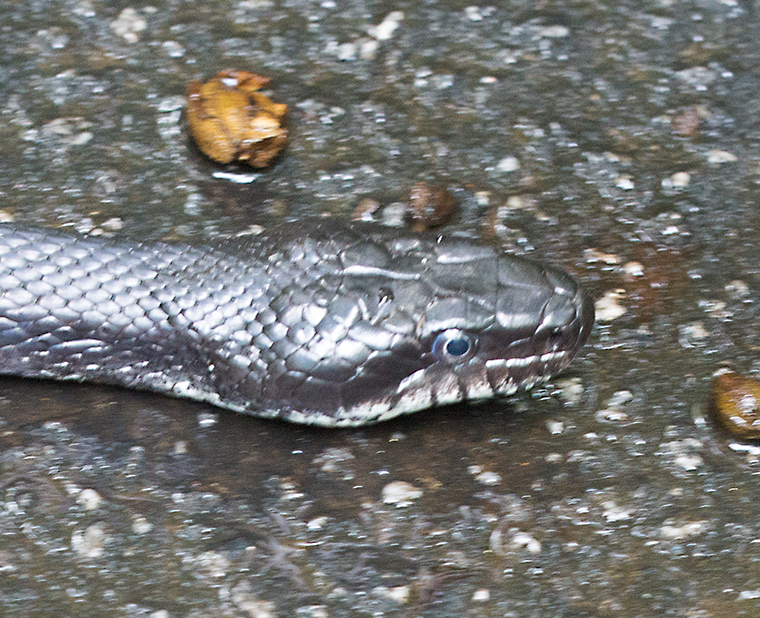This big Black Rat Snake (Pantherophis obsoletus) visited our driveway. I would judge it to be between six and seven feet long, which is about as big as they get around here. It had a look back at us and continued slowly on its way.
This photograph shows the snake’s tongue. It was busy flicking it in and out when it first became aware of our presence. Snakes cannot hear airborne sounds. They can detect vibrations in the substrate quite well, however. The tongue is extended to collect small particles from the air. These particle’s are transferred to the vomeronasal organ (also called Jacobson’s organ) in the roof of the snake’s mouth. Neurons and receptors there transmit information on the particles to the olfactory system and ultimately to the brain. The particles could suggest a prey animal is nearby, another Black Rat Snake is nearby, or something strange and possibly threatening is near, namely us.
Notice the round pupil of the Black Rat Snake. Rattlesnakes (Crotalus sp., Sistrurus sp.) Copperheads (Agkistrodon contortrix), and Cottonmouths (Agkistrodon piscivorus) all have vertical pupils that expand like a cat’s pupil. Of the venomous snakes found in Georgia, only the Coral Snake has a round pupil. So all you have to do is get close enough to see a snake’s pupil to gain information on whether it is venomous or not!




I really enjoy your posts. Last night there was a fuzzy looking light brown fairly large spider in the house? Do you have any idea what it was and if it is poisonous? Also, have you and your wife been to the Civil War Round Table in Washington? Please say hello if you come again. I’m already subscribed to your blog.
I do not think the spider you described would be venomous to humans. If you can send a picture of it, or other spiders that interest you, I will try to ID it. Thanks for the invitation to stop by. I did come to the Civil War Roundtable one time.
Thanks very much. If I see him again I will. He came out from under the fireplace insert and I got him to go back in.